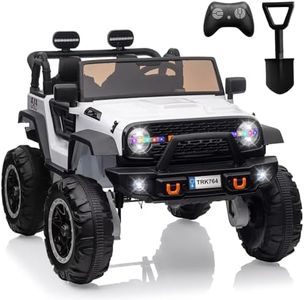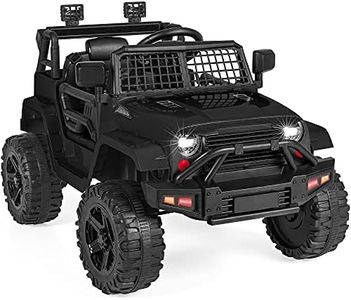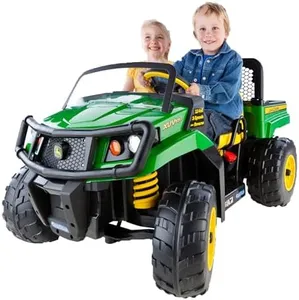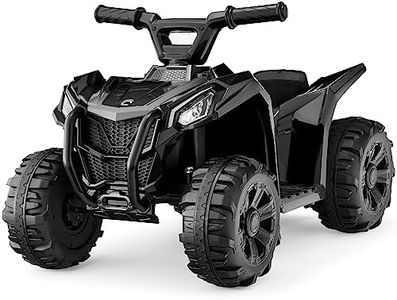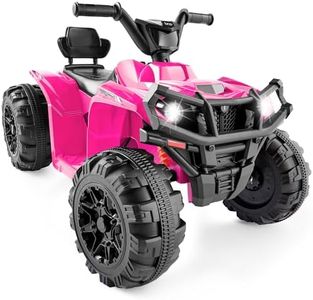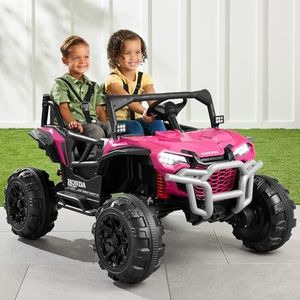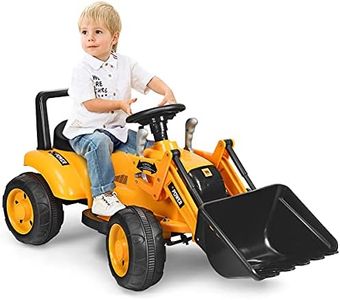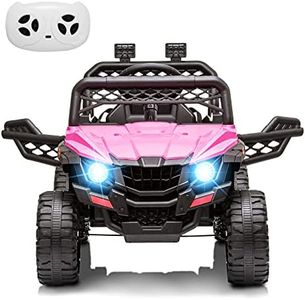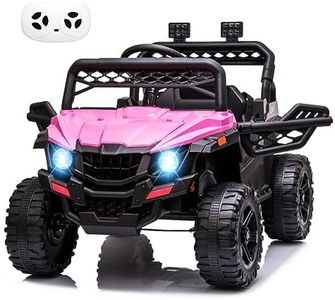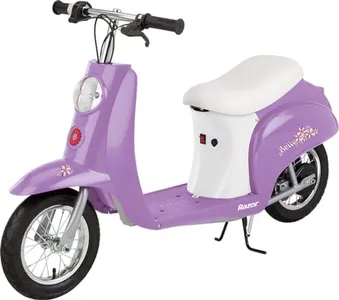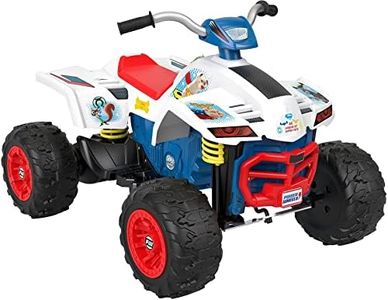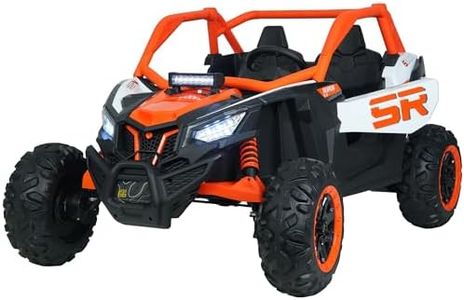7 Best Power Wheels 2025 in the United States
Our technology thoroughly searches through the online shopping world, reviewing hundreds of sites. We then process and analyze this information, updating in real-time to bring you the latest top-rated products. This way, you always get the best and most current options available.

Our Top Picks
Winner
Best Choice Products 12V Kids Ride On Truck Car w/Parent Remote Control, Spring Suspension, LED Lights, AUX Port - Black
Most important from
20461 reviews
The Best Choice Products 12V Kids Ride On Truck Car is an engaging option for children aged 3 years and older, offering a fun and realistic driving experience. One of its main strengths is the dual control feature, allowing parents to maneuver the vehicle with a remote, ensuring safety while kids learn to handle it themselves. The adjustable seatbelt and lockable doors enhance safety, making it a reliable choice for young drivers.
This ride-on car boasts a powerful 12V motor, enabling it to traverse various terrains thanks to its traction tires and spring suspension system. At a maximum speed of 2.8mph, it provides a safe yet thrilling ride for kids. The inclusion of LED headlights adds a fun touch, while the AUX port allows children to connect their devices and enjoy music as they drive, which can make the experience even more enjoyable.
There are some limitations to consider. The weight capacity is 61 lbs, which may restrict its usability as your child grows. Additionally, while the plastic wheels are convenient because they won’t deflate, they may not provide the same level of traction as rubber wheels on very rough surfaces. The dimensions—39.25”L x 26”W x 26”H—mean it requires adequate outdoor space for use, but it is compact enough for storage when not in use.
Most important from
20461 reviews
Peg Perego John Deere Gator XUV, Green
Most important from
1025 reviews
The Peg Perego John Deere Gator XUV is a great choice for young kids aged 3 to 8 who are looking for a fun and safe way to explore their surroundings. With two speed options of 2.5 and 4.5 mph, plus a reverse feature, it allows little ones to enjoy a bit of excitement while giving parents the option to limit speed for beginners. The accelerator pedal comes with automatic brakes, enhancing safety during rides, which is a key consideration for parents.
One standout feature is the extra-large dump bed with a tailgate, perfect for imaginative play. Kids can transport toys or even help with small chores around the yard, adding to the product’s appeal. The adjustable seat is another plus, accommodating growing children and extending the life of the toy as they develop.
There are a few drawbacks to consider. The weight capacity may be limiting for larger children, as the vehicle can only accommodate a certain amount of weight. It may also not perform as well on rough terrain since it is designed primarily for flat surfaces, which could restrict where kids can play with it. Additionally, some users may find the assembly process challenging and the overall size may take up more space than expected in smaller yards. The battery life is decent for the age group but may require regular charging if used frequently or on hilly terrain. The Peg Perego John Deere Gator XUV strikes a good balance between fun and safety, making it a solid choice for families with young children seeking outdoor play options.
Most important from
1025 reviews
Best Choice Products 6V Kids Ride On Toy, 4-Wheeler Quad ATV Play Car w/ 1.8MPH Max Speed, Treaded Tires, Rubber Handles, Push-Button Accelerator - Black
Most important from
619 reviews
The Best Choice Products 6V Kids Ride On Toy is a solid choice for young children aged 1.5-3 years. It supports a weight capacity of up to 44 pounds, making it suitable for most toddlers within this age range. With a max speed of 1.8 mph, it offers a safe yet enjoyable ride for young children. The toy features a rechargeable 6V battery, providing 1-2 hours of run time per charge, which should be ample for daily play sessions. However, frequent recharging may be necessary for longer playtimes.
Safety is enhanced with an easy one-button control system, rubber handles, and large treaded wheels, providing stability and ease of use. The 4-wheel suspension allows it to navigate various terrains like grass, dirt, driveways, and sidewalks, adding to its versatility. The dimensions are 27 inches in length, 17.5 inches in width, and 17.75 inches in height, making it a compact ride-on toy that can be easily stored.
The rugged and stylish design, realistic features, and durability are likely to appeal to both children and parents. It may not be suitable for children over 3 years old due to its size and weight capacity. Additionally, while it has a good battery life for its intended age range, older children may find the speed and battery life limiting. This product offers a good balance of safety, design, and terrain capability for young children.
Most important from
619 reviews
Buying Guide for the Best Power Wheels
When choosing a power wheel for your child, it's important to consider several key factors to ensure you select the best fit for their needs and safety. Power wheels come in various styles, sizes, and capabilities, so understanding the specifications can help you make an informed decision. Here are the key specs to consider and how to navigate them.FAQ
Most Popular Categories Right Now
